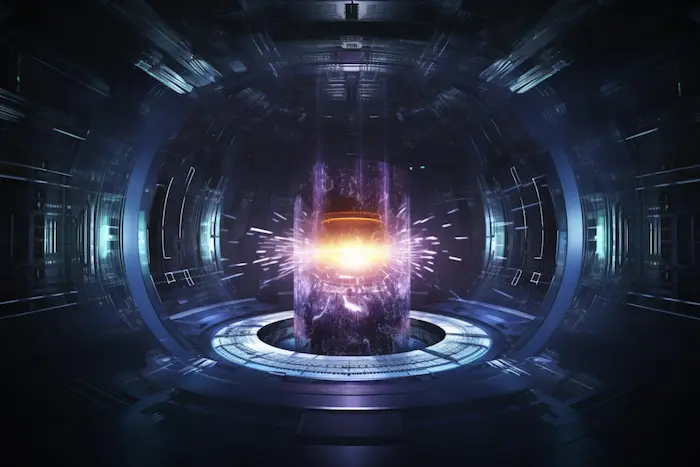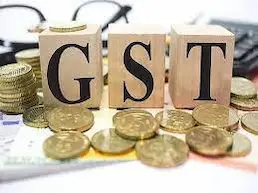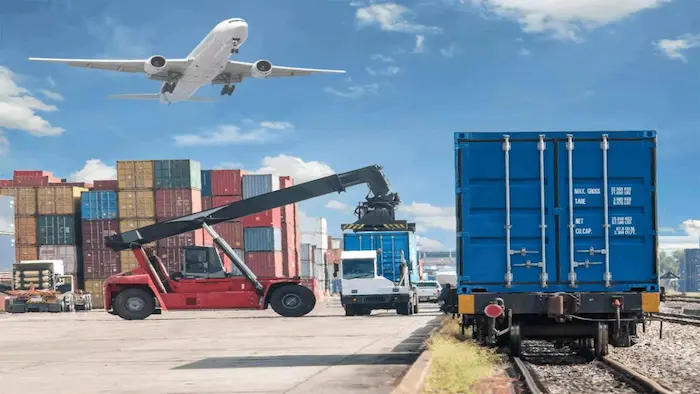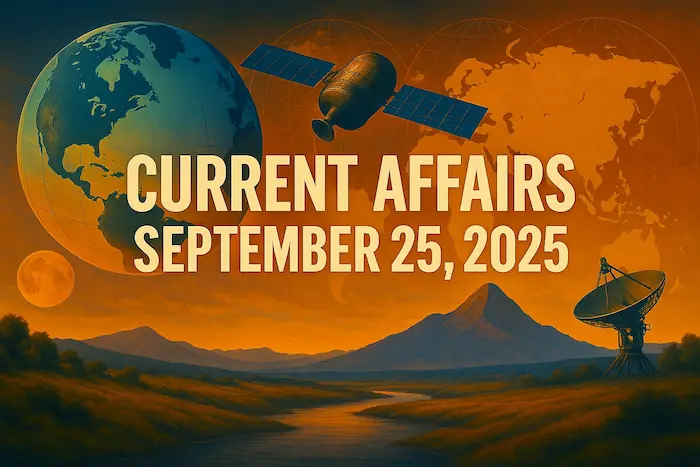1.Healthcare as an Investment – India’s Journey Towards Viksit Bharat 2047 – Economy

Why in News?
India is witnessing a paradigm shift in healthcare policy, evolving from viewing healthcare as a welfare expenditure to a strategic investment in human capital. This transformation is central to achieving the vision of Viksit Bharat (Developed India) by 2047, with goals of improving equity, productivity, and overall quality of life.
Key Takeaways:
- Emphasis on preventive healthcare and nutrition.
- Major reforms since 2014 have expanded access and improved health outcomes.
- Healthcare is now linked to economic growth, poverty reduction, and employment generation.
Major Healthcare Initiatives Supporting Viksit Bharat Vision:
1. Ayushman Bharat – PMJAY (2018)
- World’s largest publicly funded health insurance scheme.
- Covers over 55 crore poor and vulnerable citizens.
- Prevents health-related poverty and encourages private hospital expansion in Tier II and III cities.
2. POSHAN Abhiyaan (2018)
- Focuses on maternal and child nutrition.
- Aims to reduce stunting, wasting, and improve cognitive development, boosting long-term economic productivity.
3. Jan Aushadhi Kendras
- Over 16,900 centres provide generic medicines at affordable prices.
- Reduces out-of-pocket healthcare expenses significantly.
4. Swachh Bharat Mission (SBM)
- Constructed millions of toilets, reduced open defecation.
- Prevented an estimated 60,000–70,000 infant deaths per year.
- Major impact on public health and sanitation-related diseases.
Economic Impact of Healthcare Reform:
| Indicator | Status |
|---|---|
| Out-of-pocket expenditure | Dropped from 64% (2013–14) to 39% (2021–22) |
| Medical colleges (2014–2024) | Increased from 387 to 780 |
| Doctors produced annually | Over 1.18 lakh doctors, highest in the world |
Implications:
- Less out-of-pocket spending → higher disposable income and increased household savings
- Expansion in medical education and infrastructure → employment generation
- Healthier workforce → higher productivity and GDP growth
Why This Matters:
- Healthcare = Economic Asset: A healthy population is more productive and innovative.
- India’s demographic dividend can only be realized if the population is healthy, educated, and skilled.
- By 2047, India aims for:
- Increased life expectancy
- Lower infant and maternal mortality
- Universal healthcare access
- Digital and integrated health systems
Exam Connect – Possible Questions
Prelims
1. Which of the following initiatives is aimed at improving maternal and child nutrition in India?
A. PM-JAY
B. Jan Aushadhi
C. POSHAN Abhiyaan
D. Ayushman Bharat Digital Mission
Answer: C. POSHAN Abhiyaan
2. Which of the following is a major contributor to the decline in out-of-pocket health expenditure in India between 2013–14 and 2021–22?
A. Privatization of hospitals
B. Decline in disease prevalence
C. Expansion of insurance and sanitation coverage
D. Medical tourism
Answer: C. Expansion of insurance and sanitation coverage
Mains
1. “Healthcare is no longer a welfare expense but an investment in national development.” Discuss this statement in the context of India’s journey towards Viksit Bharat 2047.
2. Examine the role of government healthcare initiatives like Ayushman Bharat and POSHAN Abhiyaan in enhancing India’s economic potential and reducing poverty. How can these be strengthened in states like Himachal Pradesh?
2. Roadmap for India’s Fusion Power Plan – Science and Technology

Why in News?
The Institute for Plasma Research (IPR) in Gandhinagar has unveiled a detailed roadmap for India’s nuclear fusion programme, with the upcoming SST-Bharat reactor set to become India’s first fusion electricity generator. This aligns with India’s target of achieving Net Zero carbon emissions by 2070.
What is Nuclear Fusion?
- Nuclear fusion is a process in which two light atomic nuclei (e.g. isotopes of hydrogen – deuterium and tritium) fuse to form a heavier nucleus, releasing vast amounts of energy.
- It’s the same reaction that powers the Sun and stars.
- Fusion is cleaner and safer than fission:
- No long-lived radioactive waste
- No meltdown risk
- Abundant fuel supply
Global Context – ITER Project
| Feature | Details |
|---|---|
| Name | International Thermonuclear Experimental Reactor (ITER) |
| Location | France |
| Members | 35 countries (incl. India, EU, USA, Russia, China, Japan, South Korea) |
| Goal | Produce 500 MW of output from 50 MW of input (Q = 10), demonstrating net energy gain from fusion |
| India’s Contribution | Joined in 2005, contributing ~₹17,500 crore and 9% of hardware |
Major Indian Contributions to ITER:
- Cryostat: World’s largest vacuum vessel, built in Gujarat.
- Superconducting magnets, cryogenics, RF systems, diagnostics
- R&D on lithium-lead breeder blankets for tritium self-sufficiency
India’s Roadmap for Fusion Energy
Phase 1: 2025–2035
- Continued ITER participation
- Development of:
- Deuterium-Tritium fueling
- Plasma control
- Superconducting magnet tech
Phase 2: 2035–2060
- Development of INDRA:
- India’s fusion reactor, expected to generate 500 MWe
- Target Q-value > 20 (very high efficiency)
Phase 3: Post-2060
- Launch of commercial fusion reactors
- Target: 50 GW fusion power by 2100
- Expected to offset ~750 million tonnes of CO₂ emissions/year
SST-Bharat (Steady-State Superconducting Tokamak – Bharat)
| Feature | Details |
|---|---|
| Type | Fusion-fission hybrid (transitional model) |
| Output | 130 MW total (100 MW from fission, 30 MW from fusion) |
| Q-value | 5 |
| Cost | ₹25,000 crore (est.) |
| Technology | Superconducting magnets, hybrid fuel breeding, advanced plasma control |
| Legacy | Builds on SST-1’s success (plasma confinement for 650 ms; design: 16 mins) |
Innovation and Digital Integration
- Use of Digital Twins of Tokamaks for simulation and performance optimization.
- AI-assisted plasma confinement to manage complex reactor conditions.
- Emphasis on fuel breeding (for tritium) and waste minimization.
Why is Fusion Important for India?
- Clean energy: No carbon emissions, crucial for Net Zero by 2070
- Energy security: Abundant fusion fuel (e.g., deuterium from seawater)
- Global leadership: India among very few countries working on commercial fusion
- Tech advancement: Drives R&D in AI, superconductivity, plasma physics
Exam Connect – Possible Questions
Prelims
1. Which of the following correctly describes the process of nuclear fusion?
A. Splitting of a heavy nucleus into smaller nuclei
B. Joining of light nuclei to form a heavier nucleus with energy release
C. Emission of beta particles from radioactive elements
D. Fission of uranium in a chain reaction
Answer: B. Joining of light nuclei to form a heavier nucleus with energy release
2. Which of the following statements about ITER is/are correct?
1.It is located in France.
2.India contributes hardware and funds to ITER.
3.Its goal is to produce energy from fission reactions.
Select the correct answer:
A. 1 and 2 only
B. 2 and 3 only
C. 1 and 3 only
D. 1, 2, and 3
Answer: A. 1 and 2 only
Mains
1. Discuss India’s roadmap for nuclear fusion energy and evaluate its potential in achieving the country’s Net Zero goals by 2070. How does India’s participation in ITER complement this vision?
2. Fusion energy is often described as the “holy grail” of sustainable energy. Critically examine the scientific, economic, and geopolitical dimensions of India’s fusion power strategy in the 21st century.
3. Commissioning of Oju Hydel Project – Balancing Clean Energy and Strategic Interests – Environment
Why in News?
The Union Environment Ministry has granted approval for the 2,220 MW Oju Hydroelectric Project, located on the Subansiri River in Taksing, Upper Subansiri district, Arunachal Pradesh, near the India-China border. The project is a major step in both India’s renewable energy drive and its border infrastructure strategy.
Project Overview:
| Feature | Details |
|---|---|
| Project Type | Run-of-River Hydroelectric Project |
| Installed Capacity | 2,220 MW (8 turbines × 231.25 MW each) |
| Location | Taksing, Upper Subansiri, Arunachal Pradesh |
| Dam Type | 93 m high, 355 m long concrete gravity dam |
| Tunnel Infrastructure | 2 diversion tunnels and a 14.17 km headrace tunnel |
| Estimated Cost per Unit | ₹5.65/kWh (approx.) |
About the Sbansiri River:
- Largest tributary of the Brahmaputra
- Origin: Lhuntse County, Tibet
- Enters India through Miri Hills, flows through Arunachal Pradesh and Assam
- Known as the “Gold River”, it is prone to seasonal floods and rapids
- Basin area: 32,640 sq. km; length: ~518 km
- Holds cultural significance in the Tsari region of Tibet
Why Is This Project Important?
Energy Security & Renewable Goals:
- Clean hydroelectric power supports India’s energy transition
- Reduces dependence on coal-based plants
- Contributes to India’s renewable energy targets under SDG 7
Strategic Significance:
- Located close to the Line of Actual Control (LAC) with China
- Strengthens infrastructure in border areas
- Enhances civil-military logistics and presence in remote Himalayan zones
Hydropower Cascade Planning:
- Largest project in the Subansiri basin, key to upstream-downstream energy planning
- Enables better water flow management and load balancing
Economic Development in Northeast India:
- Promotes infrastructure growth, employment, and regional integration
- Potential for eco-tourism and power export to nearby states
Environmental Considerations:
- Run-of-river design: lower environmental footprint than large reservoir projects
- Still requires:
- Biodiversity assessment (fragile Eastern Himalayan ecosystem)
- Rehabilitation plans for affected communities
- Careful monitoring of sediment load, seismic activity, and downstream impact
Exam Connect – Possible Questions
Prelims
1. The Oju Hydroelectric Project is located on which of the following rivers?
A. Teesta
B. Subansiri
C. Lohit
D. Kameng
Answer: B. Subansiri
2. Which of the following correctly describes a “run-of-river” hydroelectric project?
A. Uses large reservoirs for power generation
B. Diverts river water without significant storage for generation
C. Is based on tidal energy
D. Requires nuclear fuel as input
Answer: B. Diverts river water without significant storage for generation
Mains
1. Discuss the strategic and environmental implications of the Oju Hydroelectric Project in Arunachal Pradesh. How do such projects contribute to both national security and renewable energy goals?
2. Hydropower is often considered a clean and sustainable energy source. Examine the challenges and opportunities in expanding hydropower infrastructure in Himalayan states like Himachal Pradesh and Arunachal Pradesh.
4. Getting GST 2.0 to Run Like a Well-Oiled Machine – Economy

Why in News?
In its 56th meeting held on September 3, 2025, the GST Council approved GST 2.0 reforms, marking a major evolution in India’s indirect tax framework. The aim is to simplify the tax structure, ease compliance, and boost consumption—with significant implications for MSMEs, households, and overall economic growth.
What is GST 2.0?
Overview of Reforms:
- Simplification of Tax Slabs:
- Transition from 4-tier structure (5%, 12%, 18%, 28%)
- To 3 simplified slabs: 5% (essentials), 18% (standard goods), and 40% (luxury/sin goods)
- Purpose:
- Ease compliance, reduce tax-related confusion and litigation
- Lower inflation by reducing tax on essentials
- Enhance tax predictability for businesses and investors
Impact on Stakeholders:
1. MSMEs (Micro, Small & Medium Enterprises):
- Reduced procedural burden
- Lowered tax on raw materials and semi-finished goods
- Better input tax credit flow
2. Households:
- Lower prices on daily essentials
- Stable consumption trends, especially in low- and middle-income segments
3. Industry & Investors:
- Fewer classification disputes (e.g., whether a product falls under 12% or 18%)
- Improved business confidence
- Increased ease of doing business
4. Government Finances:
- Short-term revenue sacrifice
- Expected to be offset by:
- Higher compliance
- Wider tax base
- Boost in consumption-led growth
Expected Outcomes:
| Impact Area | Outcome |
|---|---|
| GDP Growth | Estimated rise by 1 percentage point |
| Inflation | Moderate due to cheaper essential goods |
| Compliance | Easier filing and classification; fewer litigations |
| Tax Certainty | Promotes investments and long-term business planning |
Why Is This Important?
- GST 2.0 signifies cooperative federalism, as states and Centre collaborate through the GST Council.
- Aligns with India’s goals of:
- Formalizing the economy
- Increasing tax-to-GDP ratio
- Boosting manufacturing and services growth
Exam Connect – Possible Questions
Prelims
1. The GST Council is constituted under which Article of the Indian Constitution?
A. Article 280
B. Article 269A
C. Article 279A
D. Article 368
Answer: C. Article 279A
2. Under the GST 2.0 reform, which of the following tax slabs have been retained?
A. 12% and 28%
B. 5%, 12%, and 18%
C. 5%, 18%, and 40%
D. 5%, 15%, and 35%
Answer: C. 5%, 18%, and 40%
Mains
1. Critically evaluate the GST 2.0 reform in India. How will simplification of tax slabs and compliance norms impact MSMEs, inflation, and revenue generation?
2. Discuss the role of indirect tax reforms like GST 2.0 in supporting India’s broader economic goals. What challenges remain in its uniform implementation across states like Himachal Pradesh?
5. Lessons From India’s Vaccination Drive – Governance

Why in News?
Vaccination remains one of the most critical public health tools globally. With one-sixth of the world’s population, India runs the world’s largest immunisation program, targeting infants and pregnant women across diverse geographies. While it has achieved notable milestones, challenges such as vaccine hesitancy and post-pandemic disruptions remain pressing.
Key Vaccination Programs in India:
1. Universal Immunisation Programme (UIP):
- Launched: 1985
- Coverage: ~2.6 crore infants and ~2.9 crore pregnant women annually
- Vaccines Provided: Against 12 life-threatening diseases (e.g., polio, measles, diphtheria, tetanus, hepatitis B)
- Impact: Under-5 mortality reduced from 45/1000 (2014) to 31/1000 (2021)
2. Mission Indradhanush (MI):
- Launched: 2014
- Goal: Achieve 90% full immunization coverage
- Target Group: Unvaccinated and partially vaccinated children & pregnant women
- Achievements (till 2023):
- 5.46 crore children vaccinated
- 1.32 crore pregnant women vaccinated
Intensified Mission Indradhanush (IMI):
- Focused on hard-to-reach and marginalized populations
- Involves convergence with other ministries, like Women & Child Development, Panchayati Raj
3. COVID-19 Vaccination Program:
- Started: January 2021
- Total Doses Administered: Over 220 crore by January 2023
- Vaccine Maitri Initiative:
- Export of vaccines to 100+ countries
- Strengthened India’s role as the “Pharmacy of the World”
Key Takeaways:
| Area | Insights |
|---|---|
| Public Health Governance | Political will and inter-ministerial coordination are vital |
| Digital Innovation | Platforms like CoWIN revolutionized digital tracking of vaccinations |
| Global Leadership | Vaccine exports and manufacturing capacity show India’s soft power |
| Resilience | Despite COVID-19, India bounced back with strong routine immunization revival |
Persistent Challenges:
- Vaccine Hesitancy:
- Rooted in misinformation, religious/cultural beliefs, and lack of trust
- Prominent during COVID-19 and in rural/tribal areas
- Geographical Barriers:
- Inaccessibility in hilly, forested, and tribal regions
- Shortage of cold-chain infrastructure
- Manpower & Logistics:
- Need for more trained vaccinators
- Burden on ASHA and ANM workers
- Equity Gaps:
- Urban poor, migrants, and tribal populations often under-covered
Way Forward:
- Behavioural Change Communication (BCC):
Combat vaccine hesitancy with targeted IEC campaigns - Technological Scaling:
Expand digital tracking systems (like CoWIN) to UIP - Integration with Health & Nutrition Missions:
Link with POSHAN Abhiyaan, maternal care, and school health programs - Decentralized Planning:
Empower district-level health missions to design area-specific immunization plans
Exam Connect – Possible Questions
Prelims
1. Which of the following programs aims for 90% full immunization coverage in India?
A. Ayushman Bharat
B. Mission Indradhanush
C. POSHAN Abhiyaan
D. National Digital Health Mission
Answer: B
2. The CoWIN platform was primarily developed for:
A. Monitoring school attendance
B. Tracking tuberculosis cases
C. COVID-19 vaccination scheduling and data
D. Managing civil supplies distribution
Answer: C
Mains
1. India’s vaccination journey reflects the success of political commitment and grassroots healthcare delivery. Discuss the key lessons from India’s immunization programs and the way forward for addressing vaccine hesitancy and equity gaps.
2. Evaluate the role of technology and community health workers in India’s vaccination campaigns. How can states like Himachal Pradesh further strengthen immunization in geographically challenging areas?
6. Logistics Ease Across Different States (LEADS), 2025 – Economy

Why in News?
The Union Minister for Commerce and Industry has released the LEADS 2025 Report—a benchmarking tool designed to assess the logistics performance of various States and Union Territories. The index plays a key role in guiding infrastructure development, policy reforms, and supply chain efficiency across India.
What is LEADS?
| Feature | Details |
|---|---|
| Full Form | Logistics Ease Across Different States |
| Launched | 2018 |
| Inspired By | World Bank’s Logistics Performance Index (LPI) |
| Prepared By | Department for Promotion of Industry and Internal Trade (DPIIT) |
| Purpose | To benchmark logistics efficiency and promote healthy competition among States/UTs |
Key Framework of LEADS 2025:
The index is built on four core pillars:
- Infrastructure
- Roads, railways, warehousing, cold chain networks
- Services
- Transport services, freight handling, last-mile delivery
- Operating & Regulatory Environment
- Ease of doing logistics, clearances, state-level policies
- Sustainable Logistics
- Environmental impact, fuel efficiency, green logistics solutions
What’s New in LEADS 2025?
- Corridor-level assessments to capture region-specific logistics bottlenecks
- API-enabled evaluation for real-time truck speed data
- Dynamic stakeholder feedback integrated with digital tracking
- Updated classification system:
- Leaders: High-performing states (top-tier infrastructure & policies)
- Achievers: Performing well but scope for improvement
- Aspirers: Need to strengthen logistics ecosystem
Why Is LEADS Important?
| Area | Impact |
|---|---|
| Competitiveness | Helps identify best practices, incentivizes states to improve |
| Policy Support | Guides state & central logistics policies |
| Economic Growth | Streamlines supply chains, supports Make in India and Atmanirbhar Bharat |
| Cost Efficiency | Addresses inefficiencies leading to lower logistics costs |
| Export Competitiveness | Enhances trade logistics, supports global market integration |
Exam Connect – Possible Questions
Prelims
1. LEADS Report is published by which of the following institutions?
A. NITI Aayog
B. Ministry of Road Transport and Highways
C. Department for Promotion of Industry and Internal Trade (DPIIT)
D. Confederation of Indian Industry (CII)
Answer: C. Department for Promotion of Industry and Internal Trade (DPIIT)
2. The LEADS index is structured around which of the following pillars?
1.Infrastructure
2.Logistics Services
3.Regulatory Environment
4.Digital Literacy
Select the correct answer:
A. 1, 2 and 3 only
B. 1 and 4 only
C. 2 and 4 only
D. All of the above
Answer: A. 1, 2 and 3 only
Mains
1. Discuss the role of the LEADS Index in improving logistics infrastructure and service delivery in India. How does it align with the goals of Make in India and Atmanirbhar Bharat?
2.Efficient logistics are essential for balanced regional development. Evaluate how the LEADS framework can help hilly states like Himachal Pradesh address logistics bottlenecks and improve agricultural and tourism supply chains.

